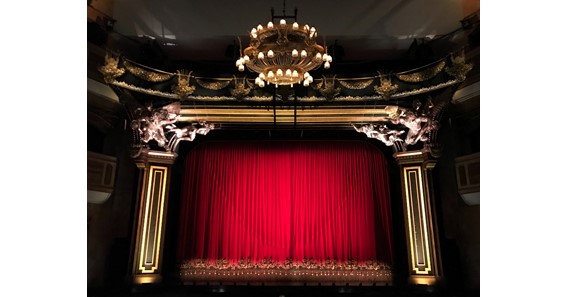Barcelona is a city that plays a significant role in the Spanish theater scene. The Catalan capital is home to more than 50 theaters and has witnessed the consecration of two of the most notable opera figures: José Carreras and Montserrat Caballé.
The city of Barcelona is a must-see for fans of the dramatic arts. It is a city chosen every day by thousands of tourists and students who travel to study Spanish in a spanish language school Barcelona, due to its immense cultural offer.
Barcelona offers a perfect and varied billboard for all tastes, even those who travel with children. The city abounds in the art of all kinds, but especially the performing arts. It is the ideal place to enjoy the greatest masterpieces of theater, in its beautiful and impressive theaters.
Some of these theaters are located in the most historical buildings you can visit in the city; others are located in small basements to provide intimate and independent shows. Considering all of them, there are more than 60 theaters throughout the city.
In this article, we will review the best theaters in the city, which you cannot miss if you are visiting or taking a spanish course Barcelona and you are a lover of the performing arts.
The Gran Teatre del Liceu
Primarily known as the Liceu, it is one of the largest in the city and one of the most important in the world. It was founded in 1847 and is located in the middle of the Rambla.
This theater has been the Catalan nobility and bourgeoisie symbol for centuries. The higher social classes used to use it as a meeting point. The most famous and well-known opera plays have been performed here, interpreted by the most extraordinary singers.
In 1994, a fire destroyed the entire complex, leaving it closed, but in 1999 it reopened its doors, completely renovated. Today the theater offers performances of various genres almost every day, including Broadway hits, contemporary shows, the most prestigious international symphonies, ballets, concerts, and opera festivals.
Since its reopening, the theater has been equipped with state-of-the-art technology for fast and efficient set and scenery changes. It also has a magnificent interior design; its main hall has an area of 530 square meters, with a capacity of 2,286 seats. It also has another space of the exact dimensions to organize banquets, with capacity for 530 people. The Hall of Mirrors (Saló dels Miralls), in the lobby, is another hall where significant events are held.
This theater is also a historical monument. If you decide to visit it, you can take a guided tour, but you can also do it without a guide (in this case, the visits are always in the morning and can only last 20 minutes maximum).
The Teatre Coliseum
This space was inaugurated in 1923, but at that time, it functioned as a cinema. It was the main and oldest cinema in the city for most of its history. It was only in 2006 that it was converted into a theater, after the building was renovated.
This theater is located on Gran Via de les Corts Catalanes and stands out for its dome, triumphal arch, the two towers, and the images of the Greek muses that appear on the facade. The design of the building was inspired by the building where the Paris Opera House is located. Its elegant and monumentalist architecture, typical of the 1920s, earned it the designation of “Bien Cultural de Interés Local” (Cultural Asset of Local Interest).
In this theater are presented all kinds of works, such as musicals, magic shows, monologues, music concerts, recitals, and many other performances and varieties.
The Teatre Grec
It is an open-air theater; it is a Greek-style amphitheater located among beautiful gardens, which add a very particular aesthetic charm due to the natural environment. It can be said that this is one of the most interesting theaters in Barcelona.
Considered one of the most prestigious theaters in the Catalan Community, El Grec is recognized for promoting new theatrical productions by regional directors and other international directors. It can seat 650 people, and it offers performances from June to August, although most of them take place during the annual theater festival called Grec.
Tivoli Theater
This theater, which opened in 1919, was also a cinema but has hosted theater, revue, circus, opera, and even a Bruce Springsteen concert. Today, this space hosts mostly musicals, ballets, and text theater.
The National Theater of Catalonia (TNC)
This theater was created in 1996 to provide a space for the best theatrical productions. Although it has a modern artistic approach, it is based on traditional classical theater. It mainly presents Catalan plays and foreign classics such as Moliere, Shakespeare, Schnitzler, and Lorca.
This duo of modernity and traditionalism can be observed in the building itself, as the façade is very similar to a classical Greek temple, and the interiors overflow with modern materials with minimalist décor. It was designed by the Catalan architect Ricardo Bofill and is arguably one of the most attractive theaters in the city.
The theater is made up of three halls and offers all kinds of shows, but it also organizes lectures, workshops, and other cultural events.
El Molino Theater
It is a music hall that pretends to imitate the famous cabaret Moulin Rouge in Paris. It was founded in 1898, but its appearance, its name, and the repertoire offered have changed many times since it changed ownership several times.
From 1910 to 1939, this theater was called “Le Petit Moulin Rouge” and its facade featured giant windmills. But when Franco’s dictatorship came to power, it was forced to change its name, and since then, it has been known as “El Molino”.
Today this theater offers cabaret, flamenco, and other musical programs of pop and electronic genres.






